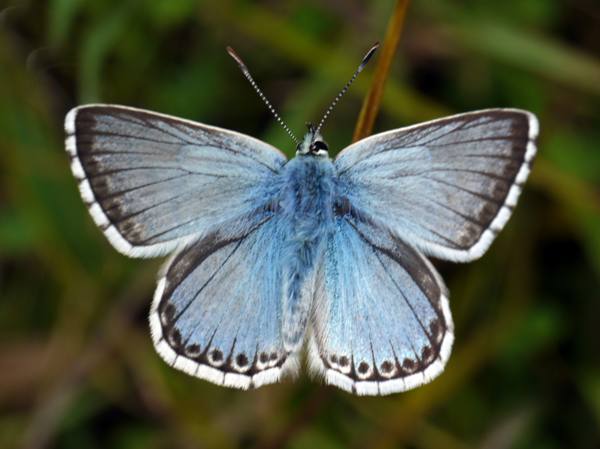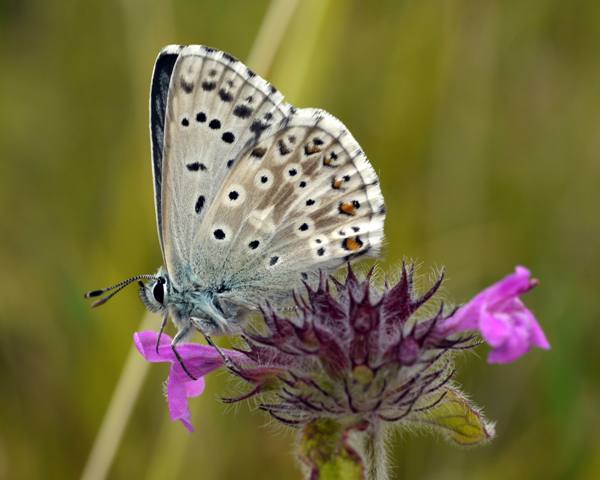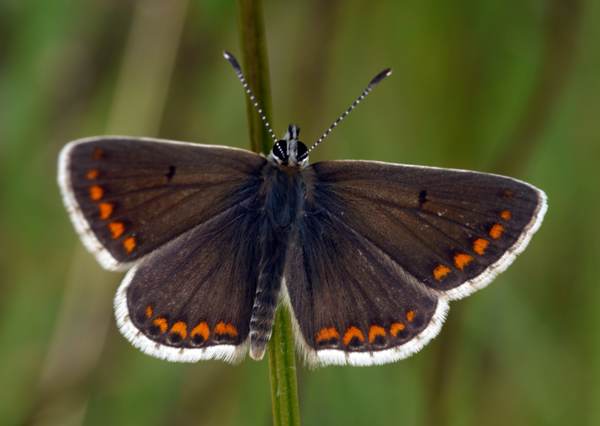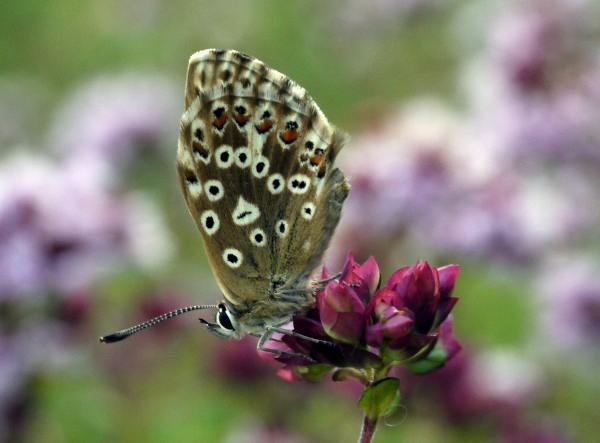Chalkhill Blue Butterfly - Polyommatus coridon
Phylum: Arthropoda - Class: Insecta - Order: Lepidoptera - Family: Lycaenidae

Above: a male Chalkhill Blue
The Chalkhill Blue is the second largest (after the Large Blue) of the blue butterflies found in Britain.
Description
With a wingspan of 30 to 36mm, the Chalkhill Blue butterfly is typically slightly larger than the Common Blue and the Adonis Blue. The males have silvery blue upper wings with dark or blackish borders and white fringes, while the white-fringed upper wings of the females are mostly brown with a dusting of blue near the roots of the wings.

Above: a male Chalkhill Blue butterfly, closed-wing view
As with many other Lycaenids, colour aberations occur and can make identification of some individual specimens difficult.

Above: a female Chalkhill Blue

Above: female Chalkhill Blue, underwing view
Compared with the Common Blue, the orange spots on the underwings of the female Chalkhill Blue are rather more muted.
Habitat
The name says it: the Chalkhill Blue is a butterfly of the chalk downlands. Polyommatus coridon (syn. Lysandra coridon) is also found in some limestone grassland habitats.
Distribution
In Britain this species is restricted to the south of England and south-east Wales; it has not been recorded in northern England and does not occur in Scotland. This lovely butterfly has been recorded in at least one site in central Ireland. Elsewhere the Chalkhill Blue is found in chalk and limestone grassland habitats in many parts of central and southern Europe.
Life cycle
Chalkhill Blues have one brood per year, and they overwinter in the egg state. The larvae, which can be seen from the end of March through to mid June, have amutual association with ants, which protect the caterpillars and in return obtain from them a suggary secretion. The larval foodplant of this species is Horseshoe Vetch Hippocrepis comosa.
Winged adults, which are fair-weather fliers, can usually be seen in July, August and early September, depending on temperature. The adults feed on various scabius and knapweed species.
Acknowledgements
This page includes pictures kindly contributed by Betty and Tony Rackham.
Studying butterflies and moths...
Excited at the prospect of flyfishing? So are we, and we're pretty sure you would find the Winding River Mystery trilogy of action-packed thrillers gripping reading too. Dead Drift, Dead Cert, and Dead End are Pat O'Reilly's latest river-and-flyfishing based novels, and now they are available in ebook format. Full details on our website here...
Buy each book for just £4.96 on Amazon...
Please Help Us: If you have found this information interesting and useful, please consider helping to keep First Nature online by making a small donation towards the web hosting and internet costs.
Any donations over and above the essential running costs will help support the conservation work of Plantlife, the Rivers Trust and charitable botanic gardens - as do author royalties and publisher proceeds from books by Pat and Sue.
